Imaging Projects
In this blog, I will share the results of all of my imaging projects. The newest will be at the top and the oldest will be further down the stack. Going back in time here is interesting - some of my early stuff was pretty rough - but I did not see it that way at the time - I was thrilled to get anything back that looked like an image! Hopefully, you will see how my work has progressed with time!

Barnard 33 & NGC 2024 - The Horsehead and Flame Nebula - 6 hours in HaLRGB
A new Orion classic from Whispering Skies Observatory: B33 (the Horsehead Nebula) silhouetted against IC 434, paired with NGC 2024 (the Flame Nebula) and its intricate dust lanes. Captured October 27–28, 2025 using LRGB + Hα for a total of 5 h 59 m 30 s, this project emphasizes clean star color and high-contrast dust structure while preserving the region’s faint, extended nebulosity.

NGC 7380 – The Wizard Nebula Revisited - This time with 25 Hours of SHOrgb!
My Second Attempt - and my finest - with NGC 7380 - The Wizard Nebula.
This is the result of 25 hours of narrowband and RGB exposure on my Williams Optics 132 FLT APO platform, equipped with a 0.8 reducer and an ASI2600MM-Pro camera.
This was another image captured from my new observatory, which allowed for capture on marginal nights.

IC 5070 - The Pelican Nebula! 18.75 hours of SHO (my longest integration yet!)
My third attempt - and my finest - at IC 5070 - The Pelican Nebula.
This is the result of almost 19 hours of narrowband exposure on my Williams Optics 132 FLT APO platform with a 0.8 reducer and an ASI2600MM-Pro camera.
This was another image that was captured from my new observatory tht allowed capture on marginal nights.
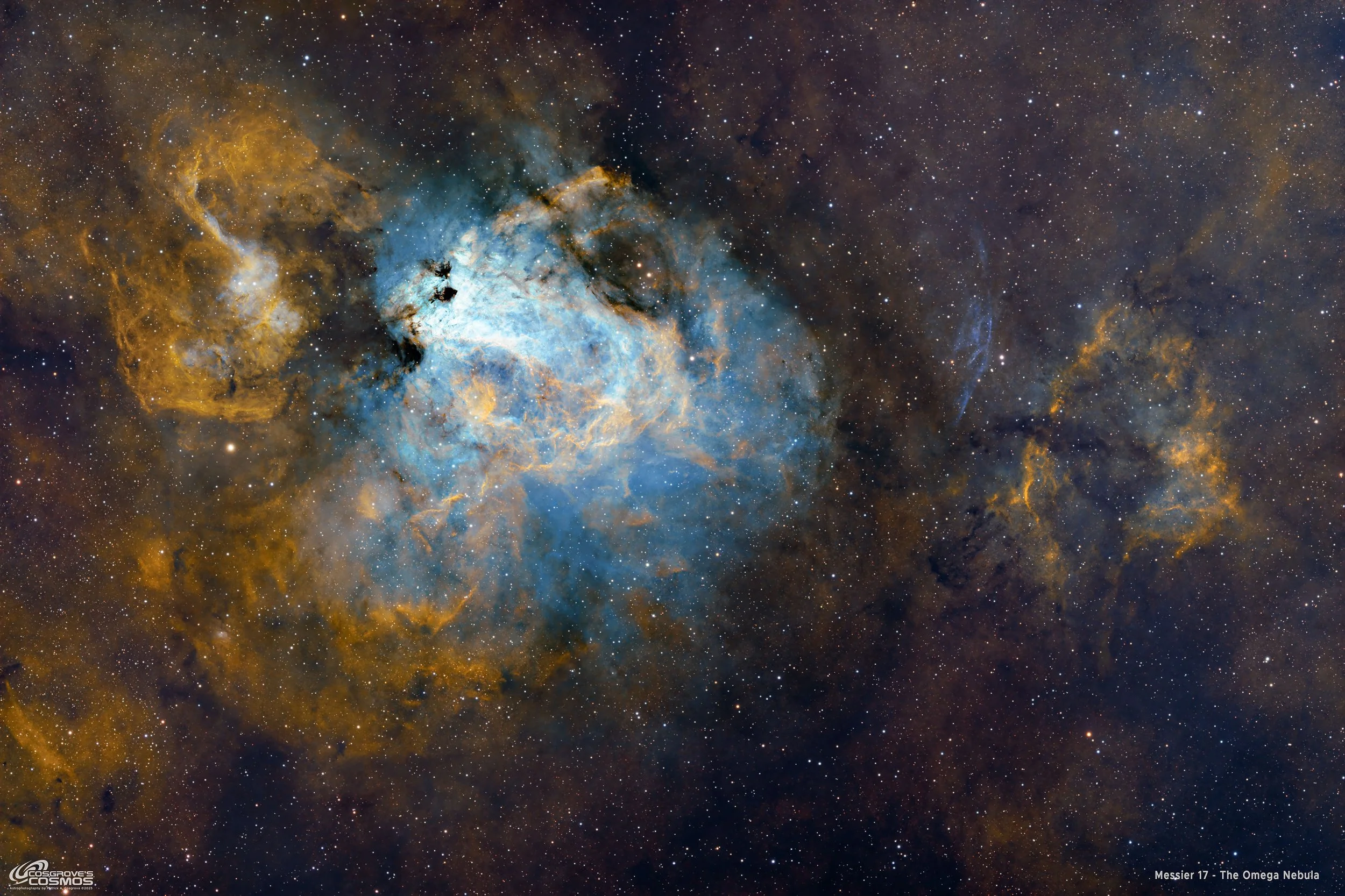
Messier 17 - The Omega Nebula - Victory After Heartbreak! (17 hours SHOrgb on M17!)
Messier 17, The Omega Nebula, is a bright and popular target in the summer constellation of Sagittarius.
This image is the result of 17 hours of SHOrgb exposure on my William Optics 132 LFT platform.
The narrowband view of this shows the target in a way that is not often seen.
Considering that this project started with three nights of exposure, where 2 of the nights had all of the frames out of focus, I am really happy with the final results.
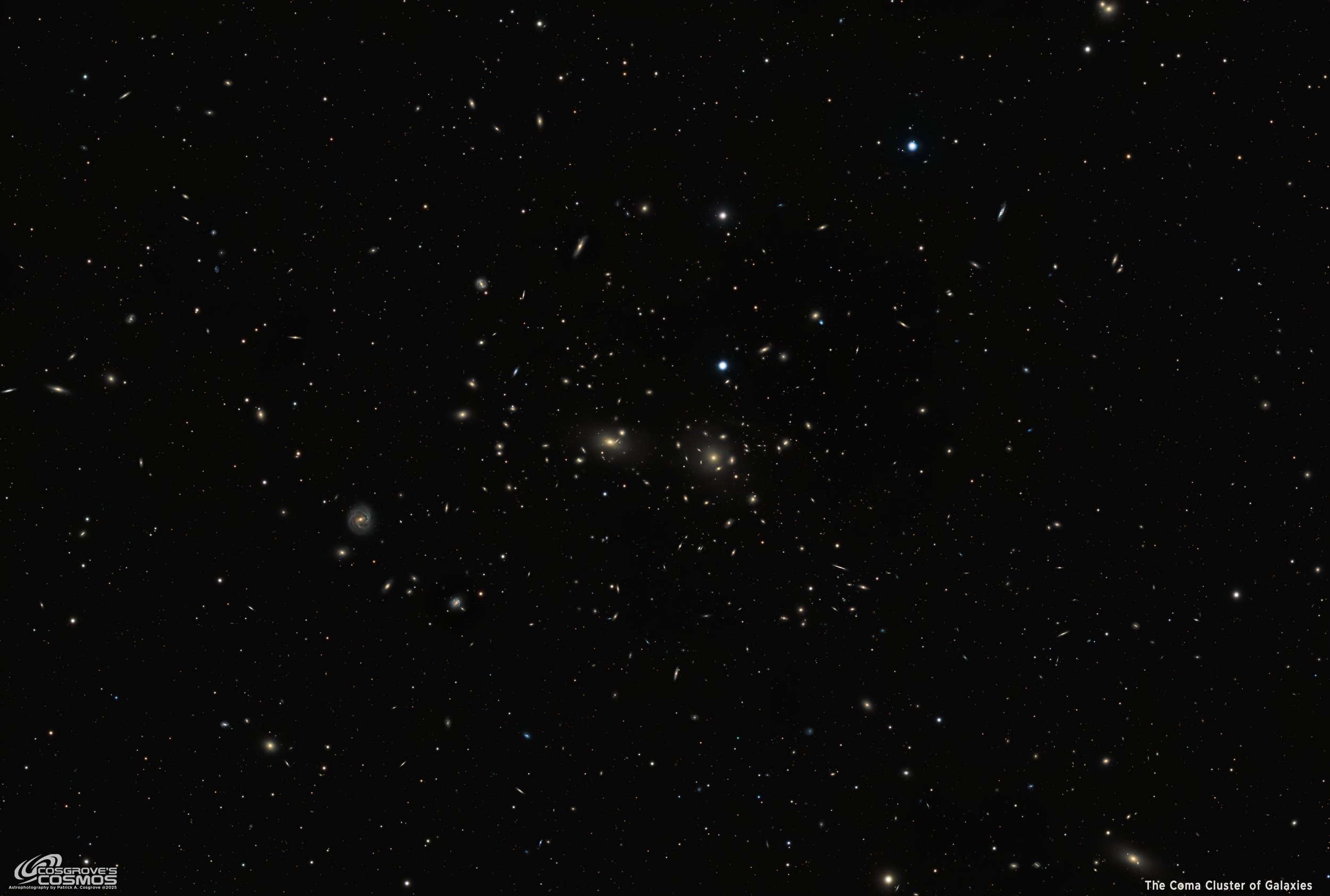
The Coma Cluster of Galaxies (Abell 1566) - Zoom In! 1000 Galaxies, 320M Light-Years Away! (~8.2 Hours of LRGB)
This is not just some star cluster! This image shows an immense cluster of over 1000 galaxies that are on average 320 million light-years away!
This image was the result of 8.2 hours of LRGB exposure taken on my William Optics platform from data collection during the first light of my Whispering Skies Observatory!
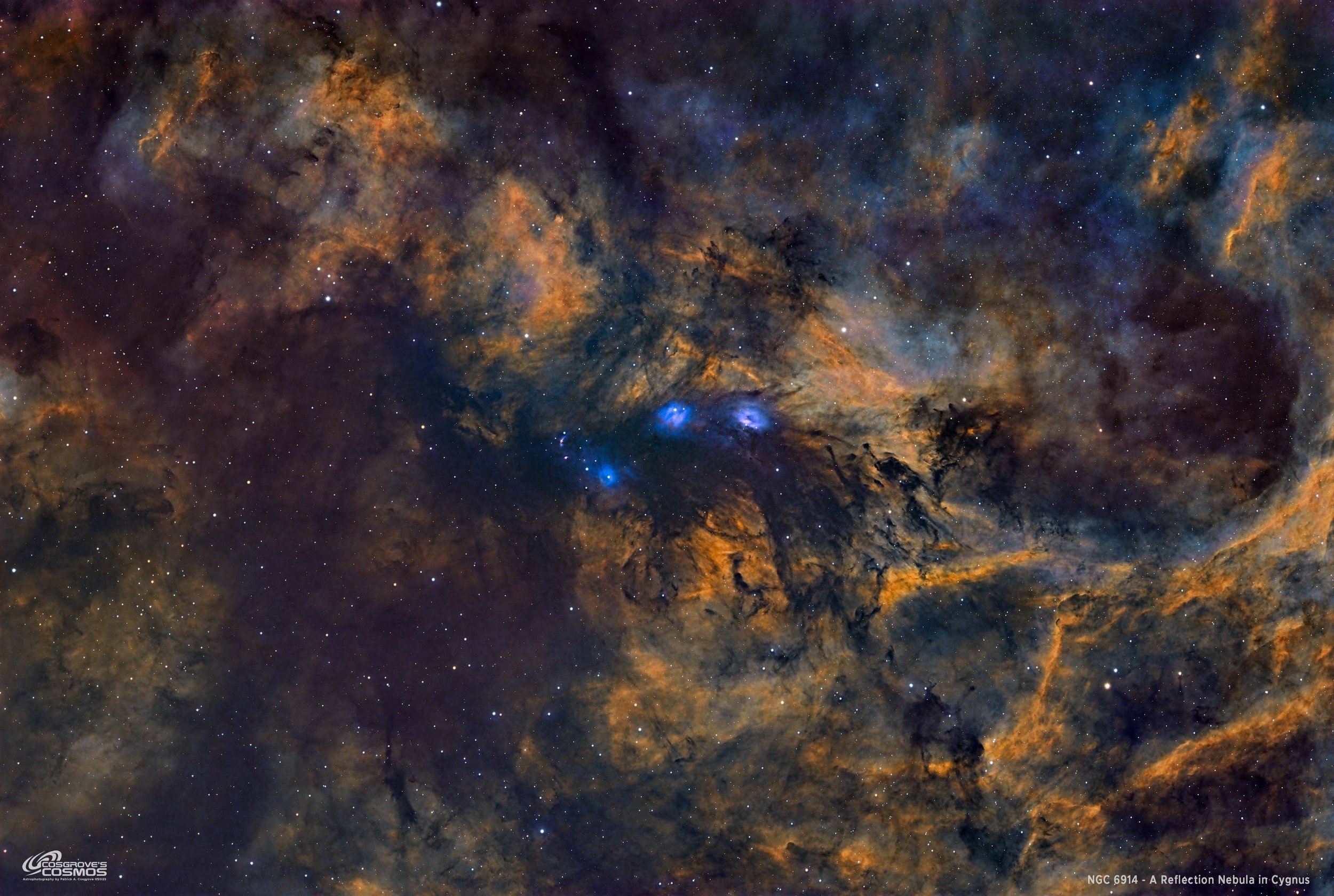
NGC 6914 - The Spider Nebula (my name!) - 14.5 Hours in SHOrgb
This is the second Imaging Project resulting from data collected during a recent - and very rare this year - clear string of nights!
This is NGC 6914 - a rich HII region located 6,000 light-years away in Cygnus. Typically shot in broadband RGB, decided to go after a narrowband version. This one resulted from 14.5 hours of SHOrgb data. The stars are broadband RGB, and the nebula is SHO Narrowband.
This object has no common name and I am proposing that we call it “The Spider Nebula!”
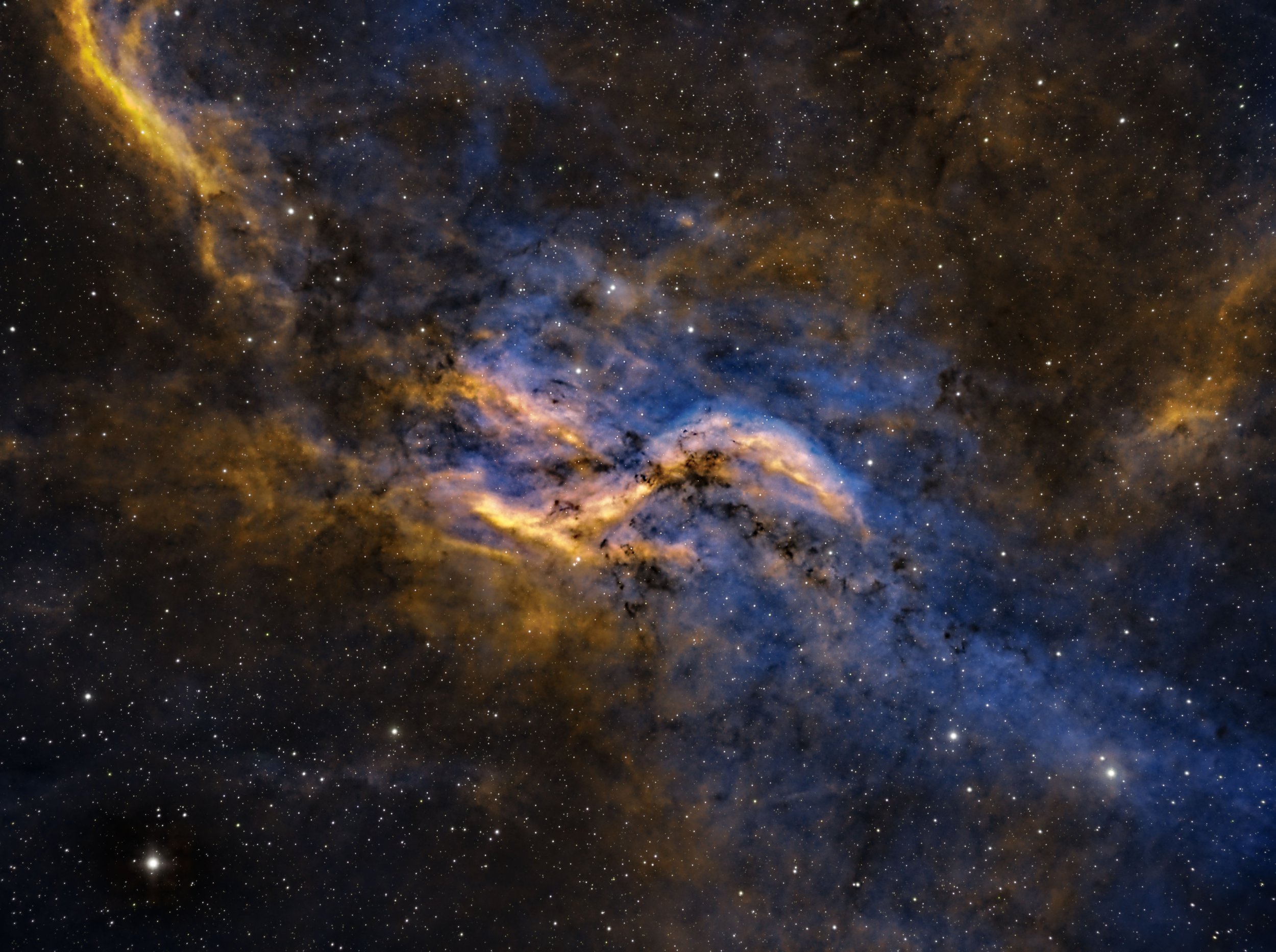
DWB 111/119 - A Reprocess of The Propeller Nebula - in SHO ~ 10 hours
This is a Reprocessing Project for data collected for DWB 111/119 in Sept of 2021.
I was never happy with the initial image. I wanted to see if I could make it better. I had a really hard time figuring out where I wanted this image to go - I think the final version is better than the original but I am not sure. You judge!
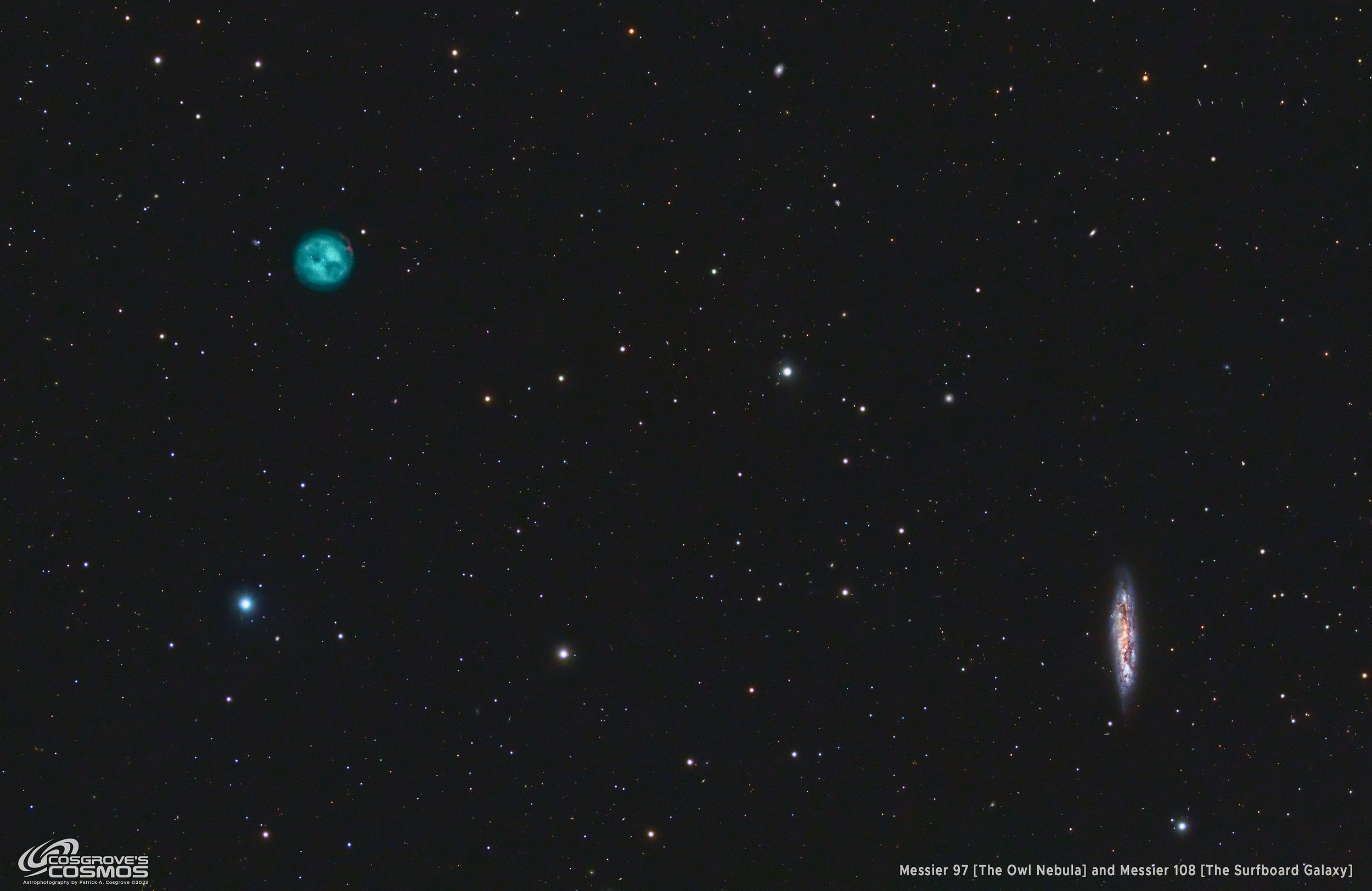
Messier 97 - The Owl Nebula and Messier 108 - The Surfboard Galaxy - 4 hours LRGB
This imaging project captures two messier objects in the same field of view!
Messier 97 is a planetary nebula better known as the Owl Nebula.
Messier 108 is better known as the Surfboard Galaxy.
This image resulted from just under 4 hours of LRGB exposure. It was shot on my William Optics 132mm Plaform after being upgraded with a flattened/0.8X Reducer and a new ZWO ASI12600MM-Pro camera.
This image was the first project I have been able to do in 2023 and was taken on two nights when the Jet Stream pushed the Smoke Plume from the Alberta Wildfires to the south of us. But this image still suffered from smoke effects!
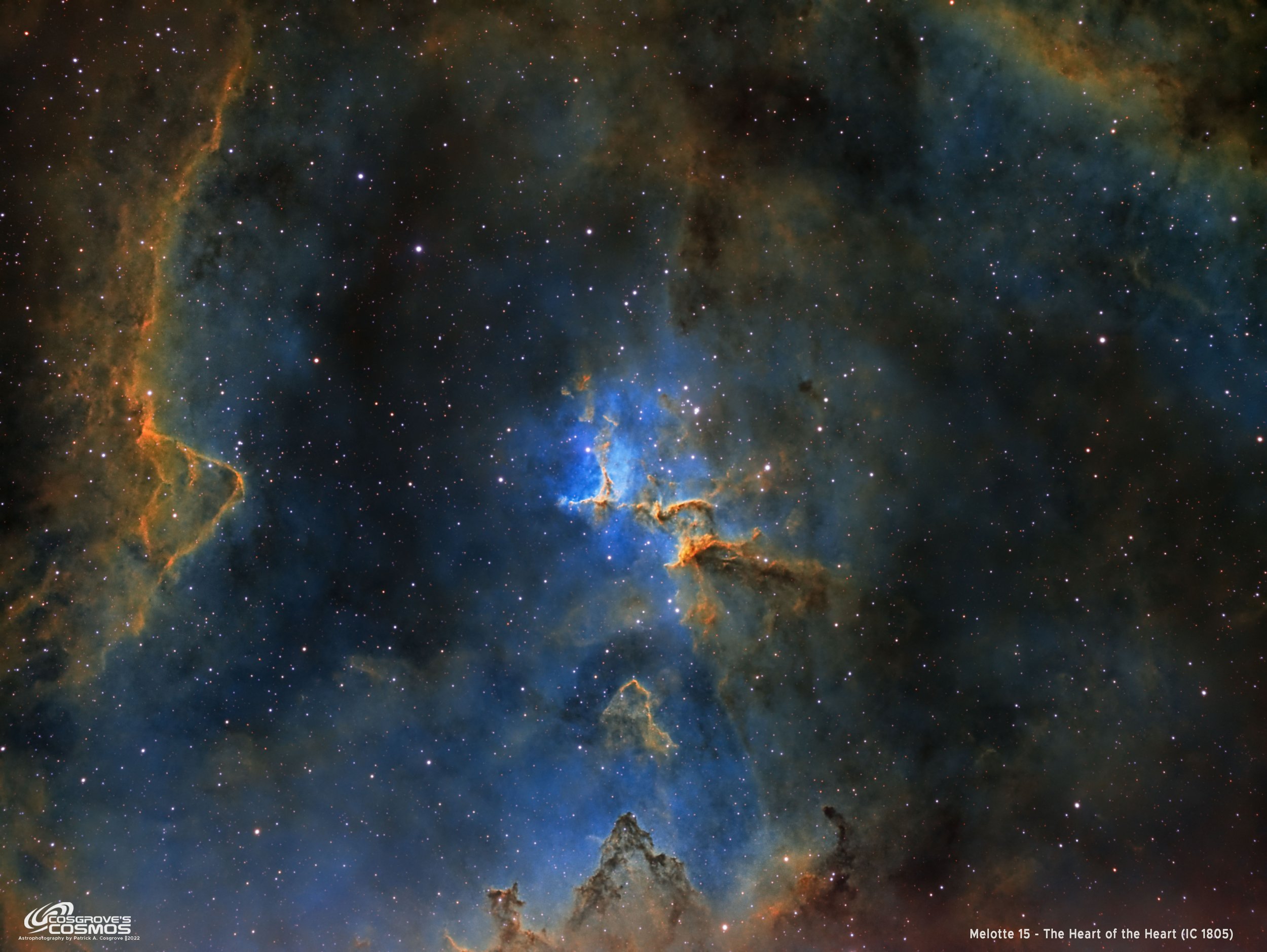
Melotte 15 - The Heart of the Heart Nebula (IC 1805) - 5.5 hours of SHO
Melotte 15, better known as the “Heart of the Heart,” is an open cluster with emission and reflection nebulae that creates an interesting structure that can be found in the center of IC 1805 - the Heart Nebula.
This rich region is located about 7,100 light-years from Earth in the constellation of Cassiopea.
This is image is the result of 5.5 hours of narrowband data collected on my William Optics 132mm FLT platform using a ZWO ASI1600MM-Prop camera.
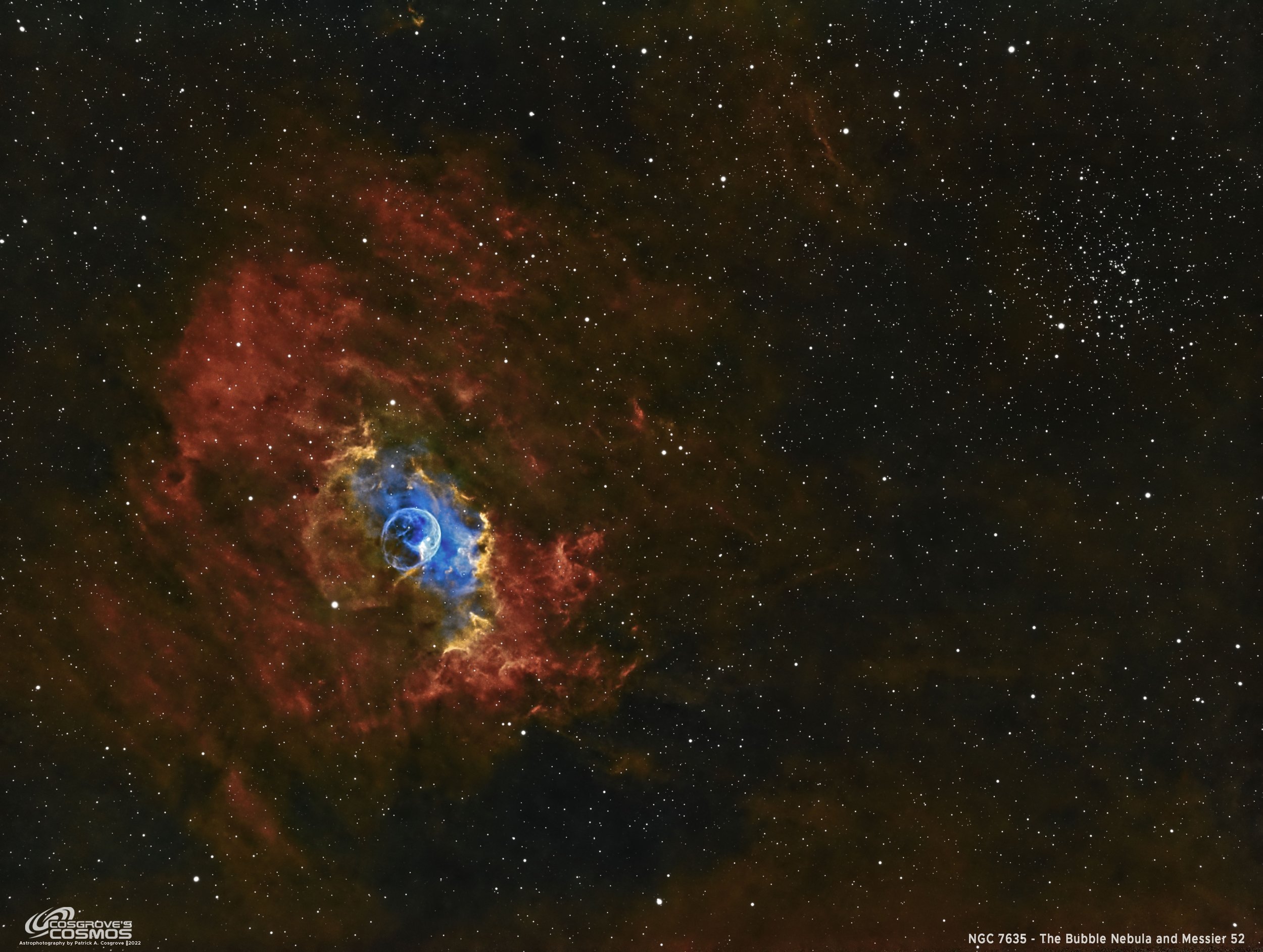
NGC 7635 - The Bubble Nebula w/M52 - 8.25 hours in SHO - Not Sure I Love it.
NGC 7635 - The Bubble Nebula with M52. 8.25 hours in SHO.
This image was shot on my William Optics 132mm FLT APO platform, using a ASI1600MM-Pro Camera and the IOptron CEM60 mount.
The original goal was to do a deeper integration of at least 15 hours - and while the weather would have supported this, I missed two clear nights due to illness.
This image has a very high color and contrast position - almost too high for me, but I disliked the lower contrast and saturation versions more - so this is it. I am not sure I love this image….
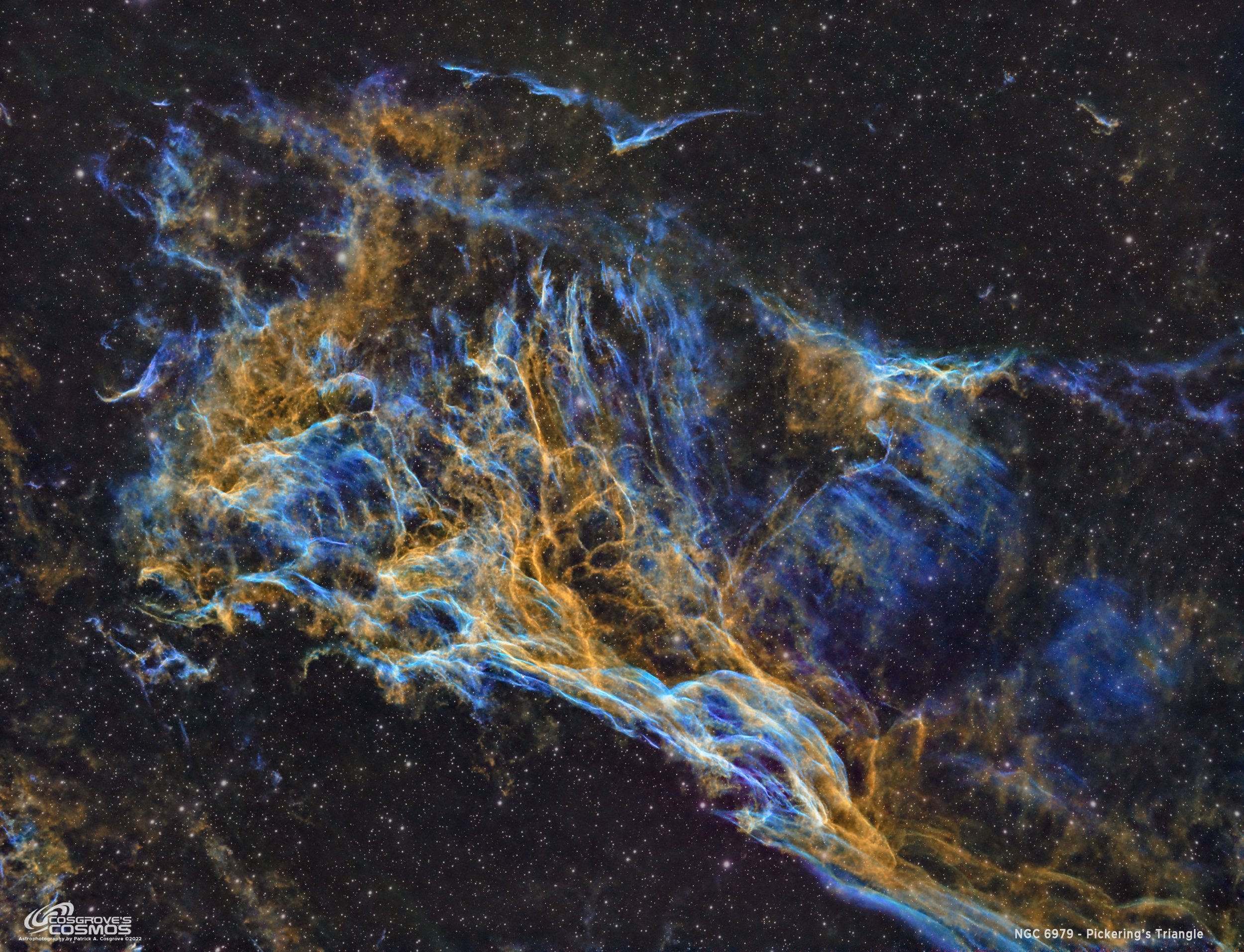
NGC 6979: Pickering’s Triangle ~ 12 hours in SHO
Pickering’s Triangle is a smaller and fainter section of the Cygnus Loop. While most portions of this supernova remnant have NGC catalog designations, Pickering's Triangle does not. It was discovered after the New General Catalog was published and thus missed out! Often NGC 6979 is used for this object but that is not technically correct. This image is the result of ~12 hours of narrowband exposure taken with my William Optics 132mm FLT APO Platform and rendered using the Hubble SHO palette.

NGC6995/IC1340 - The Bat Nebula! - 13.9 hours in SHO
The Bat Nebula is actually a small portion of the Eastern Veil Nebula, designated as either NGC6995 or IC 1340. This is a close-up of a fragment of a supernova remnant located 2400 light-years away in the constellation of Cygnus. This is a 13.9-hour integration in narrowband using my William Optics 132mm FLT APO scope and the ZWO ASI1600MM-Pro camera. The deep integration produced some wonderful data of a region of the sky that is both subtle and complex at the same time. Look at it in full resolution to experience this amazing part of the sky!

SH2-73 - An Integrated Flux Nebula in Hercules - 9.8 hours in LRGB
SH2-73 was originally cataloged as an emission nebula. This was a mistake - it is actually a reflection nebula, illuminated by the light of the entire Milky Way Galaxy! This makes it an Integrated Flux Nebula, or IFN.
have tried and failed to capture IFN in the past so here is another effort. Just shy of 10 hours of integration - long for me with my tree situation, but still way too short for IFN. I have finally gotten an image of an IFN - even if it is not a very good one!
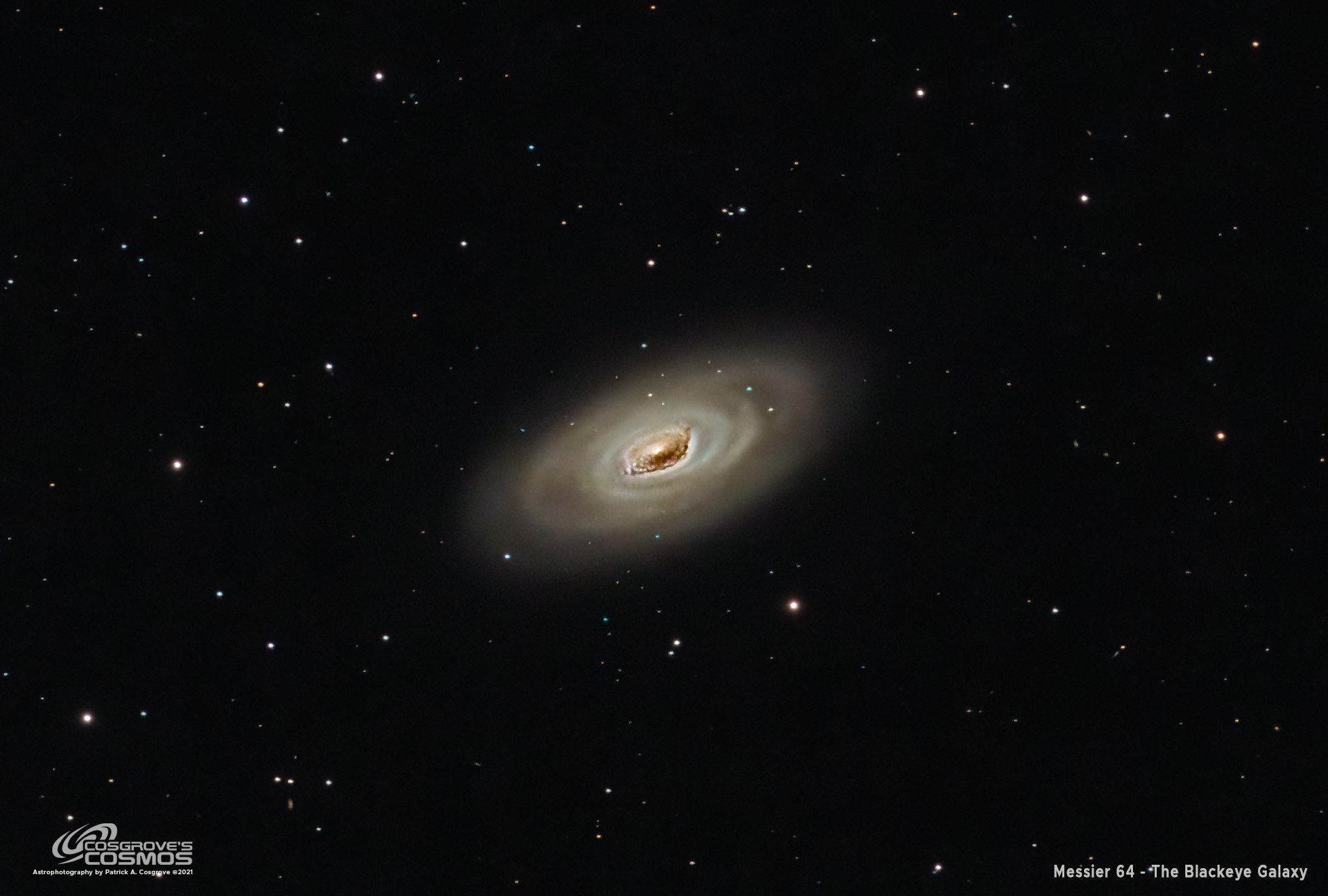
Messier 64 - The Black Eye Galaxy - 2.6 hrs in LRGB
Messier 64 - The Black Eye Galaxy is the result of 2.6 hours of LRGB data taken with my William Optics 132 mm platform and the ASI1600MM-Pro mono camera. This famous galaxy is located 17 million light-years away in the constellation of Coma Berenices. This is my second attempt with this target - the first being taken two years ago. I am pretty happy with the new results!
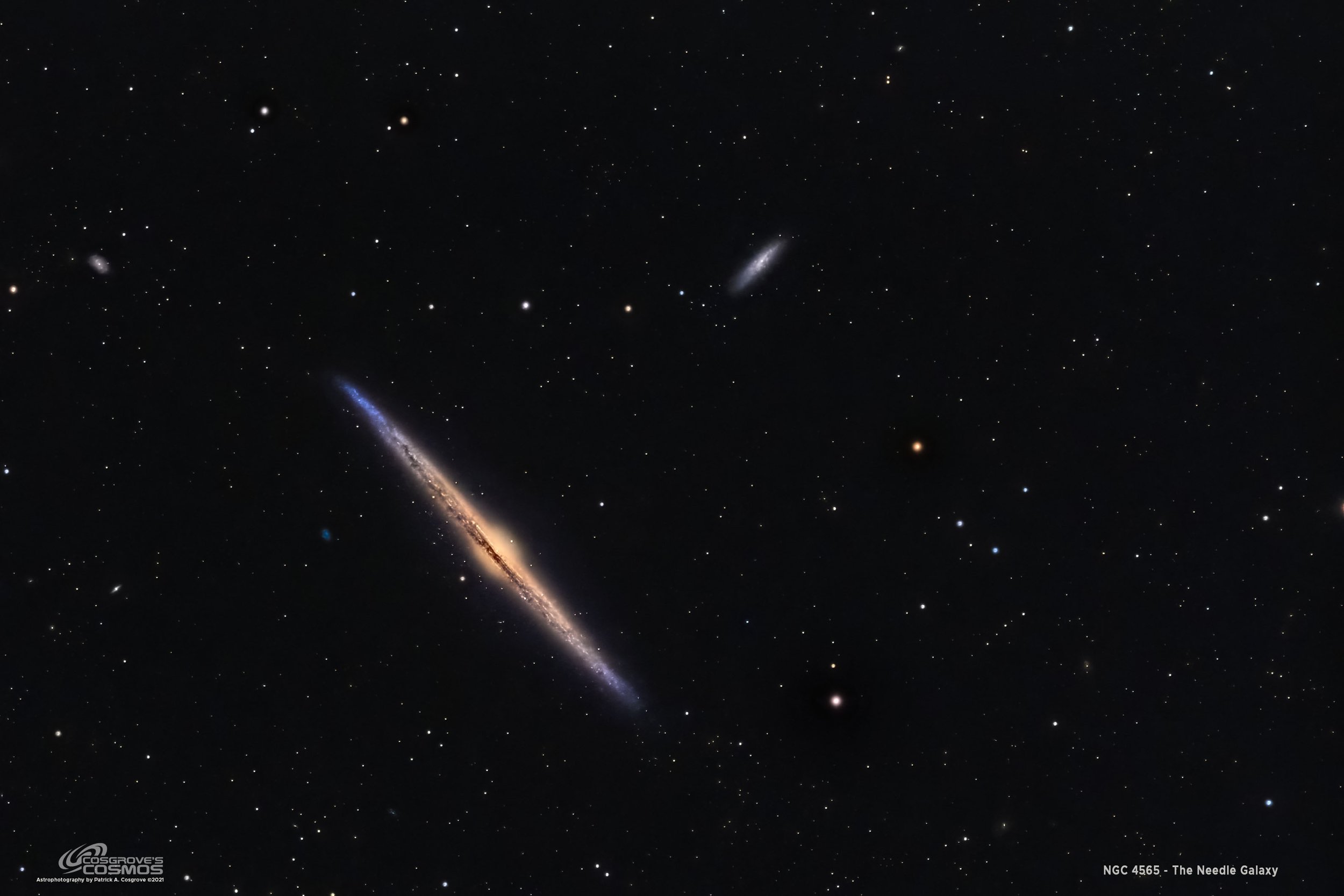
NGC 4565 - The Needle Galaxy - 11.5 hours in LRGB
NGC 4565, The “Needle Galaxy” is a classic example of an edge-on spiral galaxy. This is one of my favorite galaxies and I was very happy to finally have the chance to shoot this target! This was the result of 11.5 hours of LRGB data integration taken with the Williams Optics 132mm FLT APO scope, the CEM60 mount, and the ASI1600MM-Pro camera.
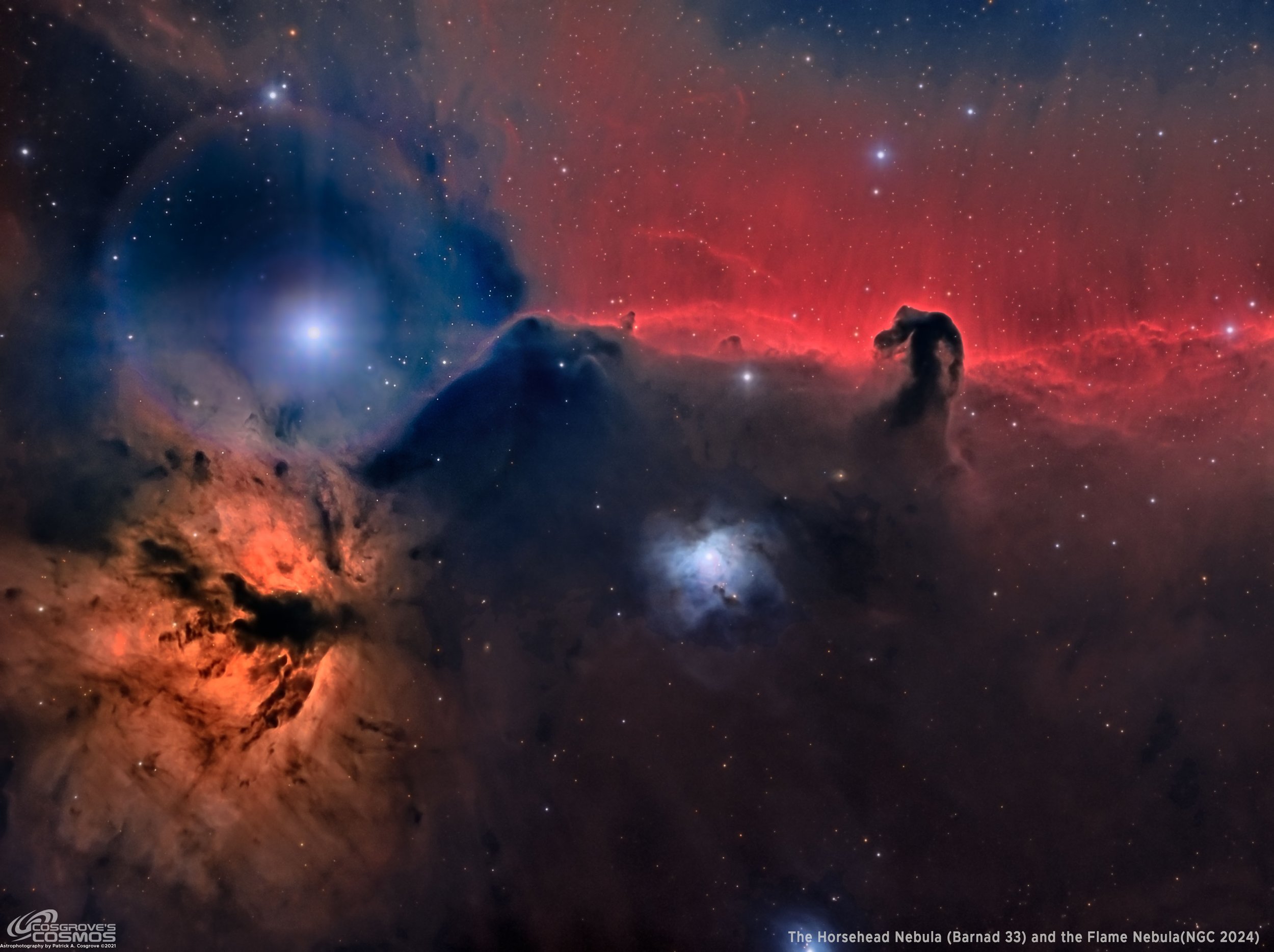
B33: The Horsehead and The Flame Nebula (NGC 2024) in LHaRGB - A “Failed” Image
The Horsehead Nebula is a small dark nebula located just to the south of the bright star Alnitak - the left-most star on Orions Belt. It is located some 1300 light-year from the earth. On the other side of Alnitak is the Flame Nebula.
This is my second attempt on this target - but I would have to classify it as a “Failed” image. The ASI1600MM-Pro camera does not work well with bright stars in the field and this image has halos and microlensing artifacts that are very difficult to process out and I am not satisfied with my results here. But even a “Failed” image offers some learning opportunities, so I share it in that spirit!

IC 63 - “The Ghost of Cassiopeia” in LHaRGB, ~10 hours
Located in 550 light-years wat in the constellation of Cassiopeia, IC 63 is known as the Ghost of Cassiopeia. This HII region is blasted by the Bright Star Gamma Cassiopeia which is located only 4 light-years from the nebula.
This is mage is the result of almost 10 hours of integration - unfortunately - the data had several significant issues that made processing very difficult. While the final image is far from perfect, it was clearly a case of making a silk purse from sow’s ear!
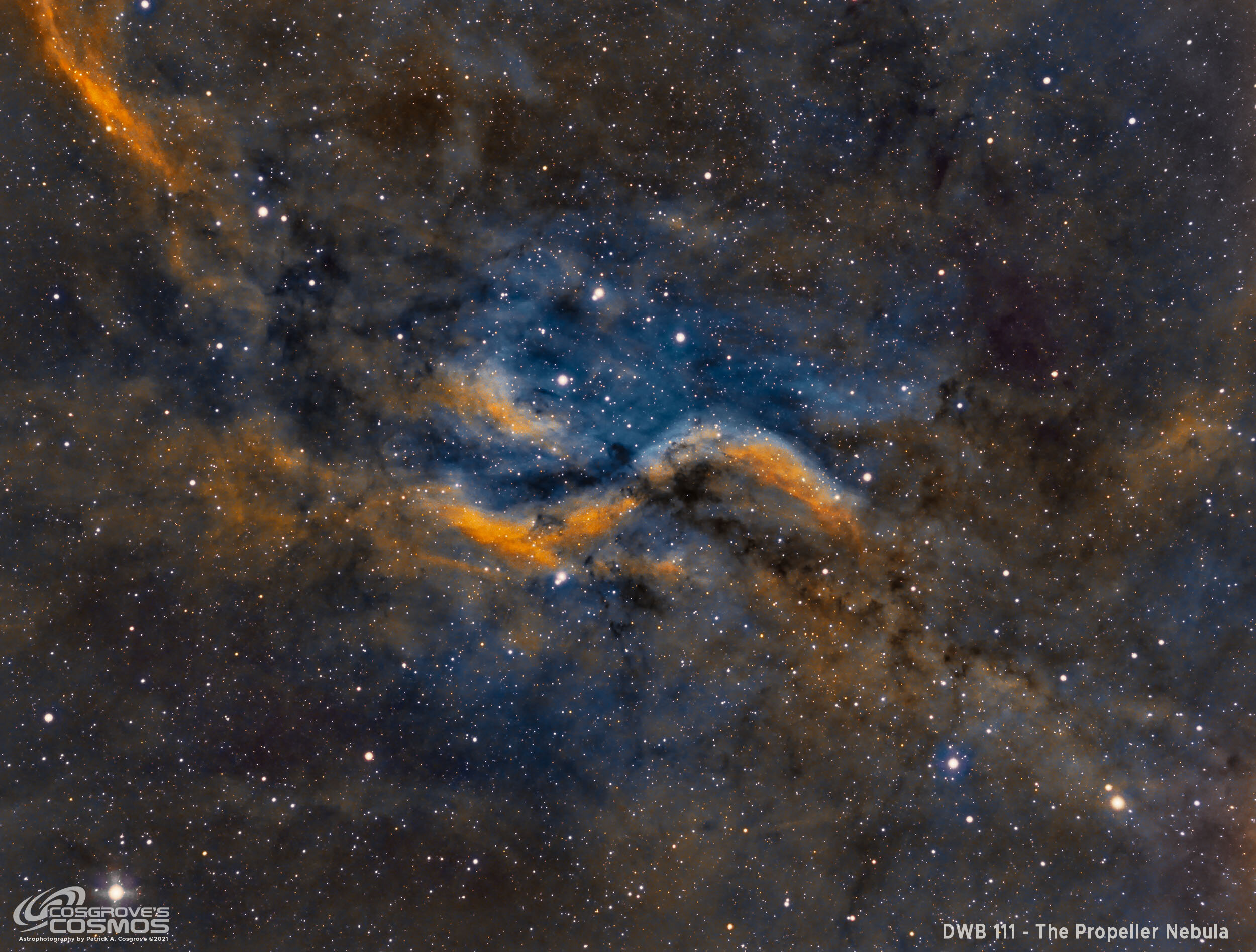
DWB 111/119 - The Propeller Nebula in SHO - 11.9 hours
DWB 111/119 is known as the Propeller nebula and located in the constellation of Cygnus, actually part of the Cygnus X complex. This nebula is very faint and was captured with an integrated time just short of 12 hours with narrowband and has been rendered in the SHO Hubble Palette. Extensive processing notes are included with this post.
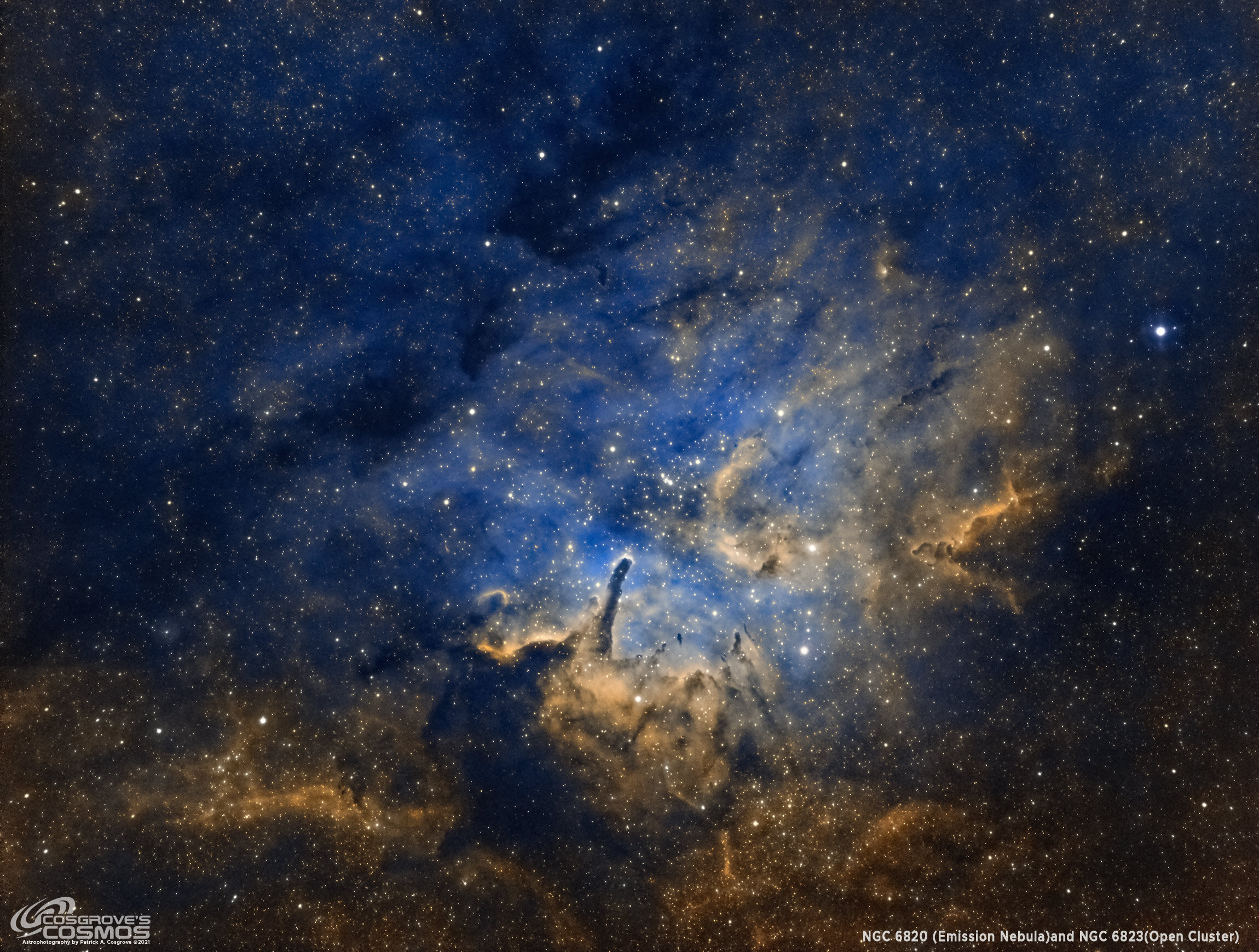
NGC 6820 and NGC 6823 - An Open Cluster w/Nebula - A Grudge Match…
Located in the constellation Vulpecula, NGC 6823 is a small open cluster of stars and associated nebula, NGC 6820. The cluster is about 6000 light-years away and measures about 50 light-years across.
A year ago, I shot this, and it was one of the worst images in my collection. I came back again this year to reclaim my honor and vanquish this target foe!
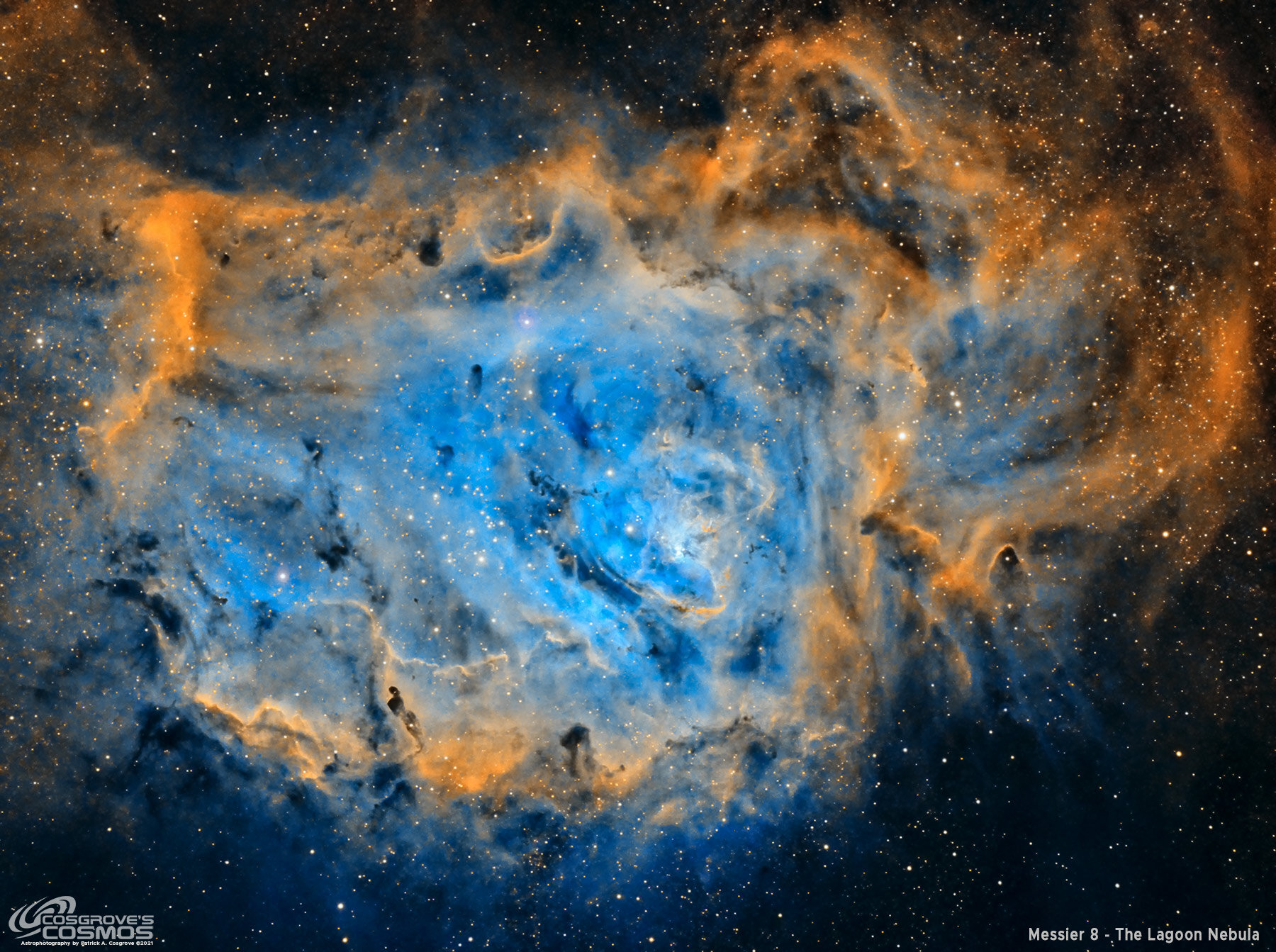
Messier 8 - The Lagoon Nebula In the Hubble Palette
Messier 8, also known as the Lagoon Nebula and NGC 6523, is a huge cloud of molecular gas and dark dust located about 4000-6000 light-years away in the constellation Sagittarius. This is a large emission nebula that is bright enough to be seen with the naked eye. Within the cloud is the open cluster NGC 6530, and a bright central feature is known as the Hour Glass.
This is my third effort on this target - a mono image in SHO - working from minimal data taken the troubling month o July 2021
